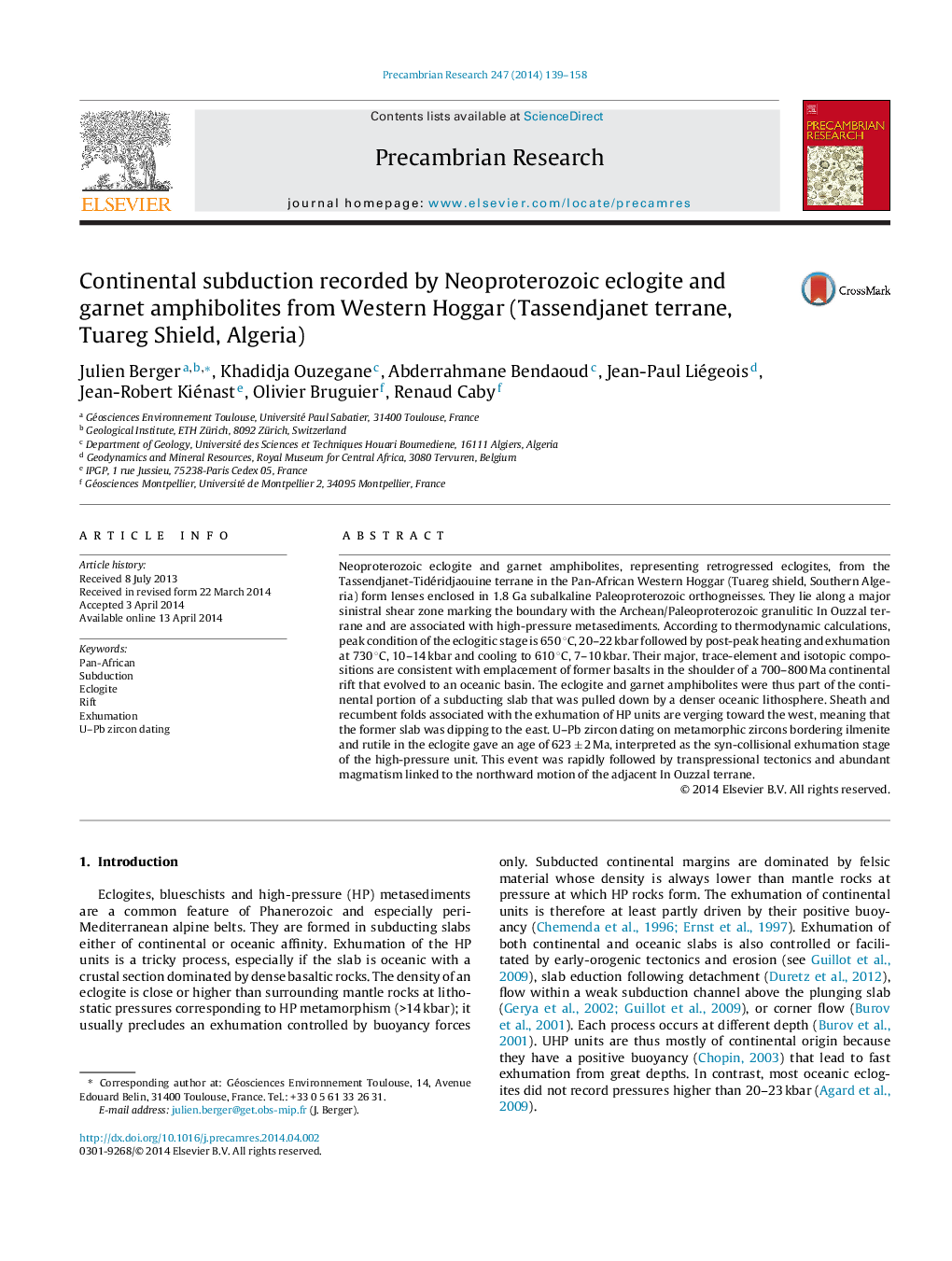| Article ID | Journal | Published Year | Pages | File Type |
|---|---|---|---|---|
| 4723097 | Precambrian Research | 2014 | 20 Pages |
•Tassendjanet eclogites formed during Neoproterozoic continental subduction.•Syn-collisional exhumation dated at 623 ± 2 Ma.•Igneous precursors formed in the shoulder of a continental rift around 700 Ma.
Neoproterozoic eclogite and garnet amphibolites, representing retrogressed eclogites, from the Tassendjanet-Tidéridjaouine terrane in the Pan-African Western Hoggar (Tuareg shield, Southern Algeria) form lenses enclosed in 1.8 Ga subalkaline Paleoproterozoic orthogneisses. They lie along a major sinistral shear zone marking the boundary with the Archean/Paleoproterozoic granulitic In Ouzzal terrane and are associated with high-pressure metasediments. According to thermodynamic calculations, peak condition of the eclogitic stage is 650 °C, 20–22 kbar followed by post-peak heating and exhumation at 730 °C, 10–14 kbar and cooling to 610 °C, 7–10 kbar. Their major, trace-element and isotopic compositions are consistent with emplacement of former basalts in the shoulder of a 700–800 Ma continental rift that evolved to an oceanic basin. The eclogite and garnet amphibolites were thus part of the continental portion of a subducting slab that was pulled down by a denser oceanic lithosphere. Sheath and recumbent folds associated with the exhumation of HP units are verging toward the west, meaning that the former slab was dipping to the east. U–Pb zircon dating on metamorphic zircons bordering ilmenite and rutile in the eclogite gave an age of 623 ± 2 Ma, interpreted as the syn-collisional exhumation stage of the high-pressure unit. This event was rapidly followed by transpressional tectonics and abundant magmatism linked to the northward motion of the adjacent In Ouzzal terrane.
